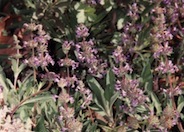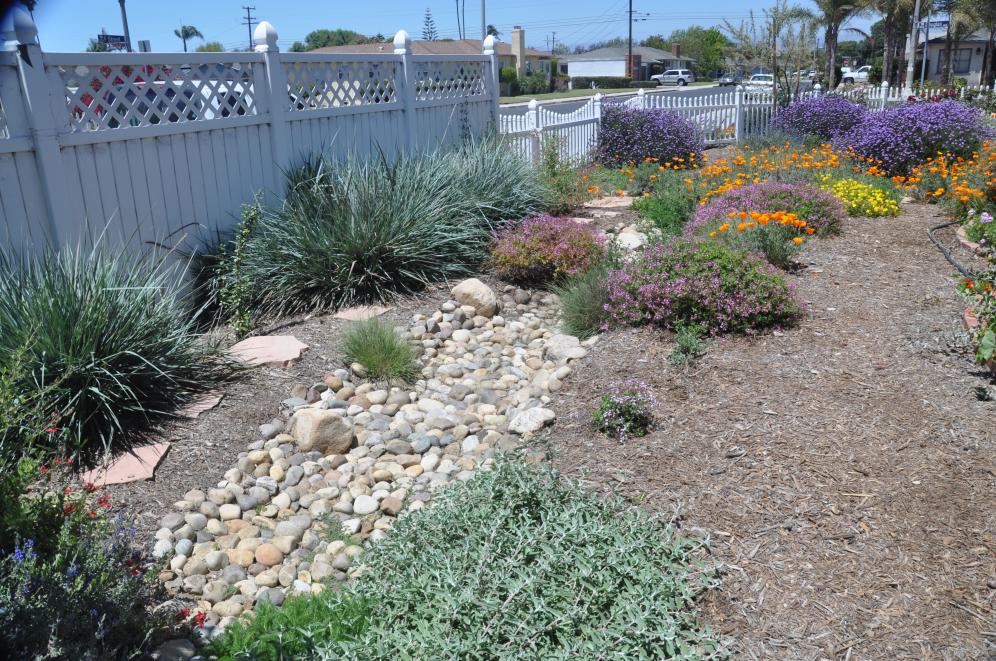The Magic of Mulch
In the natural world the endless cycle of birth, growth, decay, death and rebirth flows throughout the seasons. Plants die, leaves fall and new growth springs up in its place. Nothing is lost and the fallen leaves and dead plants decay into the soil, enriching it for the next generation of growth.
Click in the green box for more information

Common name:Dara's Choice Creeping Sage
Botanical name:Salvia sonomensis 'Dara's Choice'
This California native prostrate plant is 6"-12" high and 2'-3' wide, with bluish purple flowers that bloom in spring, held above rough, dark green, aromatic leaves. It grows very quickly forming colorful mounds. This sage attracts hummingbirds and needs extra watering during hot summer months. Otherwise, it is drought tolerant.
The grading drains water into a catch basin rather then run it off the property.

Common name:Canyon Prince Wild Rye
Botanical name:Leymus condensatus 'Canyon Prince'
One of the best known and utilized native grass selections in Southern California, this beautiful, blue gray foliage spreads out 3'-4' or more. It will reach a height of 2'-3'. It rarely flowers. It does spread by rhizomes although not as vigorously as some closely related species. It can be extremely drought tolerant and care must be taken not to over water this species as it can rot from the center. Otherwise, it is carefree and requires virtually no maintenance.

Common name:Cedros Island Verbena cv.
Botanical name:Verbena lilacina 'De La Mina'
Verbena lilacina 'De La Mina' is a selection introduced by the Santa Barbara Botanical Garden. It is a fast-growing shrub that reaches 3' tall and 3' wide. Flowers are purple and fragrant and bloom all year long in coastal areas. These star-shaped flowers are held high above the mound shaped foliage. It does well in sun and part sun and is considered drought tolerant. It is a beautiful shrub that attracts butterflies.

Common name:Ivy Geranium
Botanical name:Pelargonium peltatum
Clouds of single or double flowers are produced from spring through fall on this plant, which should be planted in areas that receive afternoon shade in warm inland valleys. Foliage resembles ivy (pointed lobes) and are bright green and glossy. Ivy Geranium looks great in hanging baskets, window boxes or in planters. Do not use for erosion control.
| Designer: Various | Rainwater Gardens B4 |
Photographer: GardenSoft |
Soils and Compost:
Incorporate compost 6" into your soil to retain water, reduce compaction, feed earthworms, and provide valuable nutrients to your plants.
Water Saving Tip:
Integrated Pest Management:
Remove irrigation water and fertilizer from areas where you don't want weeds to grow.
